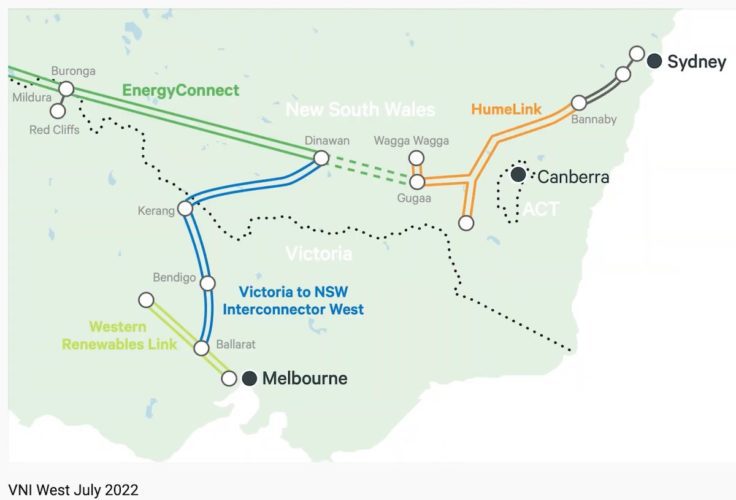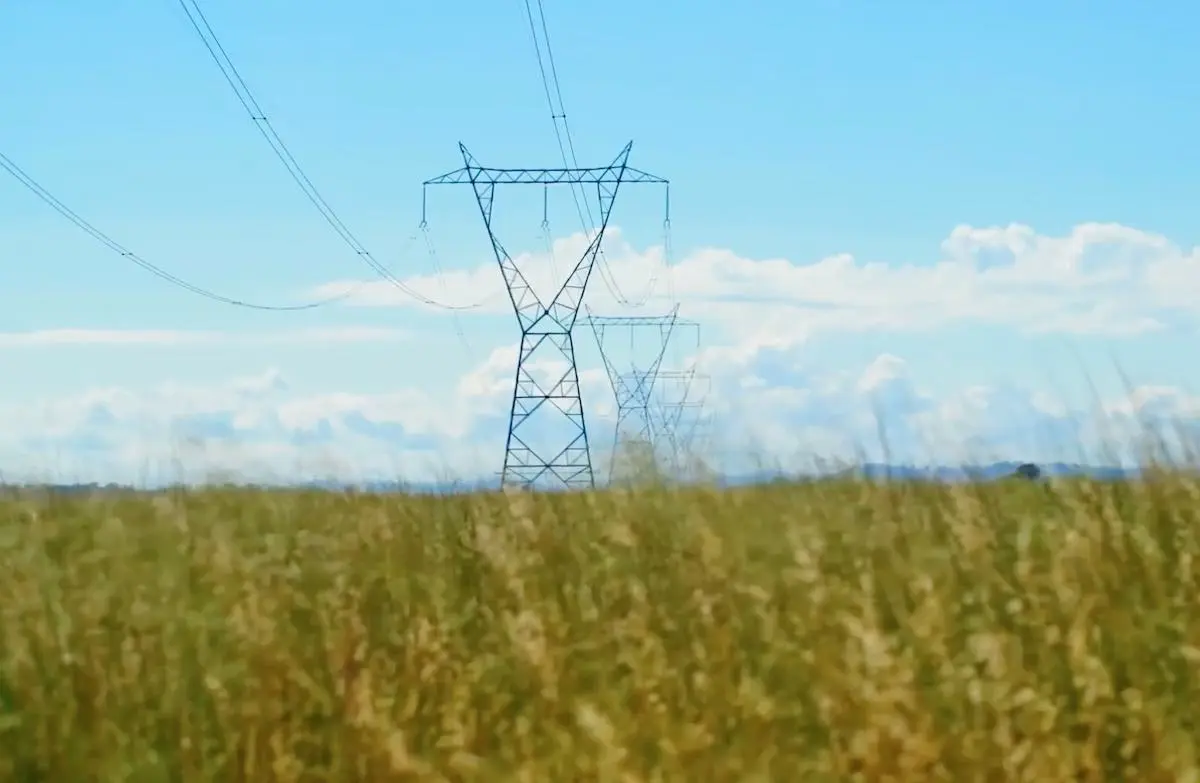Transgrid and the Australian Energy Market Operator have confirmed VNI West as the preferred proposed pathway for an “essential” new electricity transmission link between north-west Victoria and south-east New South Wales, and as the lowest-cost option for consumers in the shift to renewables.
In A Project Assessment Draft Report (PADR) released on Friday morning, Transgrid and AEMO Victorian Planning (AVP) make the case for Victoria-New South Wales Interconnector (VNI) West as a “critical part” of a more secure grid for the eastern seaboard, and for the smooth transition to renewables.
As the map below illustrates, VNI West proposes to connect Victoria’s grid north of Ballarat, via Kerang, with NSW at the Dinawan substation, linking it to Transgrid’s other major transmission projects, EnergyConnect and HumeLink.

The PADR – part of the Regulatory Investment Test for Transmission (RIT-T) process for proposed grid infrastructure projects – puts the case that this is the best and cheapest option for reinforcement of that part of the grid, rather than combining with a ‘non-network’ battery option.
The report estimates that the project will result in additional transfer capacity of around 1,930MW from Victoria to NSW and 1,800MW in the other direction – boosting the transmission limit at the Murray River REZ by up to 2.6GW, and by 400-800MW in the Western Victoria REZ.
On costs, the PADR says the construction of around 400km of double-circuit 500kV lines will have an estimated capital cost of around $3.2 billion: $1.6 billion in Victoria and $1.6 billion in NSW.
On the other side of the ledger, AEMO and Transgrid say that the construction of VNI West will provide net market benefits of $687 million.
“With projects like … EnergyConnect, HumeLink and VNI West, we’re seeing the beginning of a big rollout of energy superhighways to be able to move energy around cheaper, faster, more decarbonised,” said Transgrid CEO Brett Redman on Thursday, at an event marking the completion of the Queensland-NSW Interconnector (QNI).
And Redman said that while AEMO’s Integrated System Plan targeted completion of VNI West in the early 2030s, Transgrid’s plan was to “get there sooner.”
“The recent ISP … calls out the need to get on with the big interconnectors between New South Wales, South Australia and Victoria,” he said.
“The more that we can bring [firmed renewable] energy to market, the lower the [consumer electricity] bills. These new transmission lines let us do just that.
“The current plan [for VNI West] calls for it to be done in the in the early 2030s. We’re looking to see if we can respond to the market operator’s call to get on with it and get there earlier, get there sooner.
“We’re planning to get there quicker. We’re beginning that journey right now,” Redman said.
From here, VNI West will continue to progress through regulatory assessment (RIT-T) process, which is expected to be completed by early 2023.
Transgrid says all stakeholders, including community members, are encouraged to provide written submissions on the PADR, including comments on the inputs, analysis, and preferred option presented within the report.
A major stumbling block for the project, however, could come in the form of local opposition, as regional communities increasingly feel lumped with an unfair burden to carry in Australia’s transition to renewables.
The latest annual report from the Australian Energy Infrastructure Commissioner last week noted a major uptick in complaints from landholders and other affected community members against proposed transmission projects – and the majority of these complaints were directed towards Victorian projects.
In an effort to head this off, AVP and Transgrid say they will undertake a suite of consultations over the coming six weeks, to ensure the rationale for, and benefits of, the project are clearly understood.
“AVP and Transgrid recognise the vital role that communities and impacted landholders have in the planning and delivery of major transmission infrastructure projects, said AEMO Victoria Planning group manager Nicola Falcon.
“Both parties are dedicated to continuously improving engagement practices.
“VNI West will help unlock and share geographically and technologically diverse clean, low-cost renewables, including from renewable energy zones in Victoria and New South Wales.”
“Allowing more renewables into the power system and utilising better access to deep storage from Snowy 2.0 will reduce carbon emissions and improve the reliability and security of electricity supply as ageing coal power stations close.”








